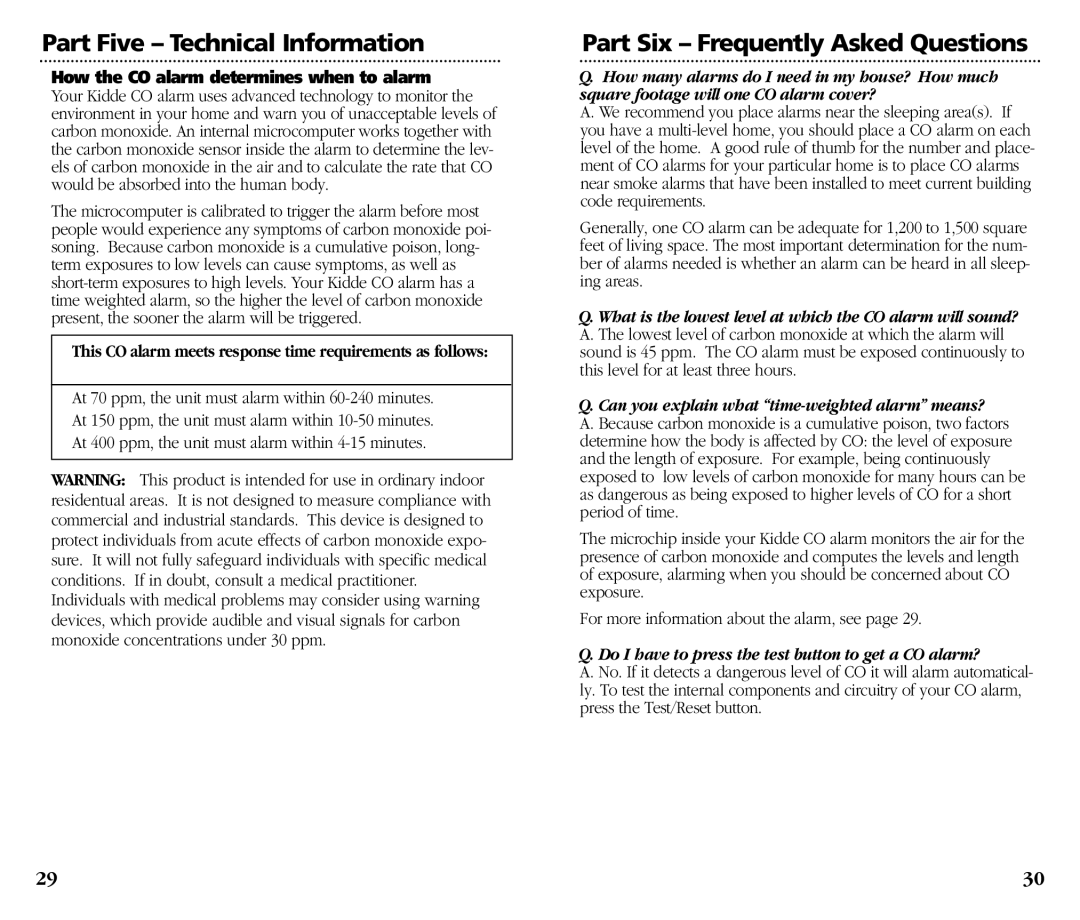KN-COB-DP-H) specifications
The Kidde KN-COB-DP-H is a state-of-the-art combination carbon monoxide and smoke detector designed to enhance safety in residential and commercial environments. With its advanced features and high-quality construction, it represents a reliable solution for protecting occupants from the dangers of smoke and carbon monoxide exposure.One of the standout features of the Kidde KN-COB-DP-H is its dual-sensor technology. It utilizes both photoelectric and ionization sensors to detect smoke from various sources. Photoelectric sensors are highly effective at detecting smoldering fires, while ionization sensors are better at recognizing fast-flaming fires. This combination maximizes the unit’s effectiveness in accurately identifying different types of fire threats, providing an early warning system that can save lives.
Moreover, the Kidde KN-COB-DP-H is equipped with a highly sensitive carbon monoxide sensor. Carbon monoxide, a colorless and odorless gas, can pose severe health risks, including poisoning and even death. The detector continuously monitors CO levels in the environment and triggers an alarm if concentrations reach dangerous levels, offering peace of mind to users regarding their safety.
Installation and usability are made easy with the Kidde KN-COB-DP-H. It features a simple mounting process that allows users to quickly set it up in key areas of their homes or businesses, such as bedrooms, hallways, and living rooms. The integrated LCD display provides real-time information about the levels of smoke and carbon monoxide, allowing for easy monitoring and awareness.
The detector also boasts a battery backup feature, ensuring that it remains functional even during power outages. With a life span of many years, the carbon monoxide and smoke detector is a long-term investment in safety. Additionally, it comes equipped with a test/silence button, allowing users to easily verify the functionality of the device and silence false alarms.
Overall, the Kidde KN-COB-DP-H combines innovative technology with user-friendly features, delivering comprehensive protection against both smoke and carbon monoxide hazards. Whether in a home or a workplace, this detector stands as a critical component of any safety plan, promoting a secure environment for all occupants. Investing in such a reliable detector is essential for proactive fire and CO safety awareness.

